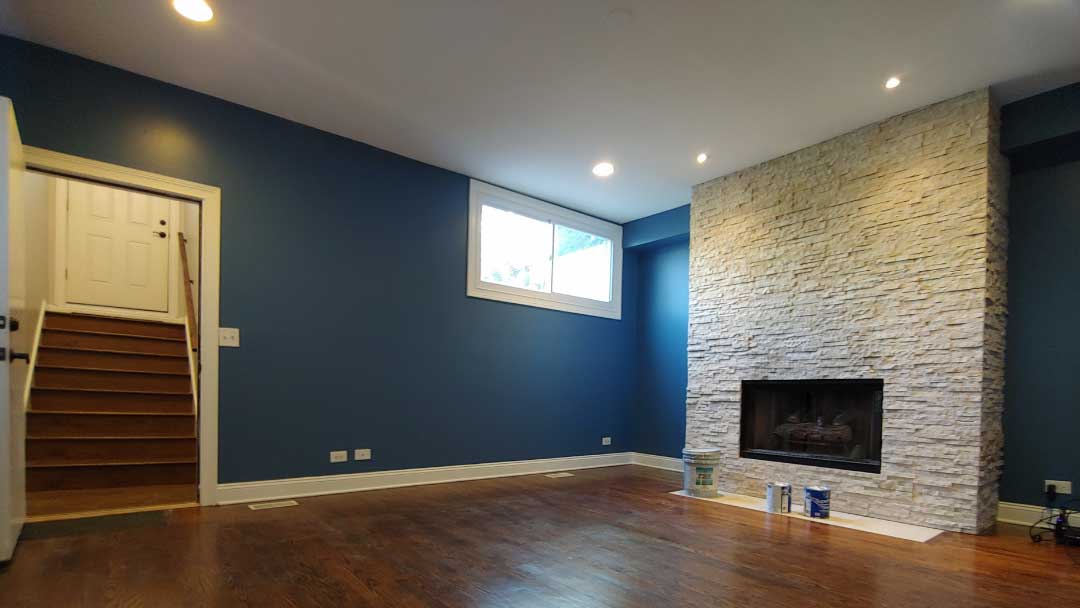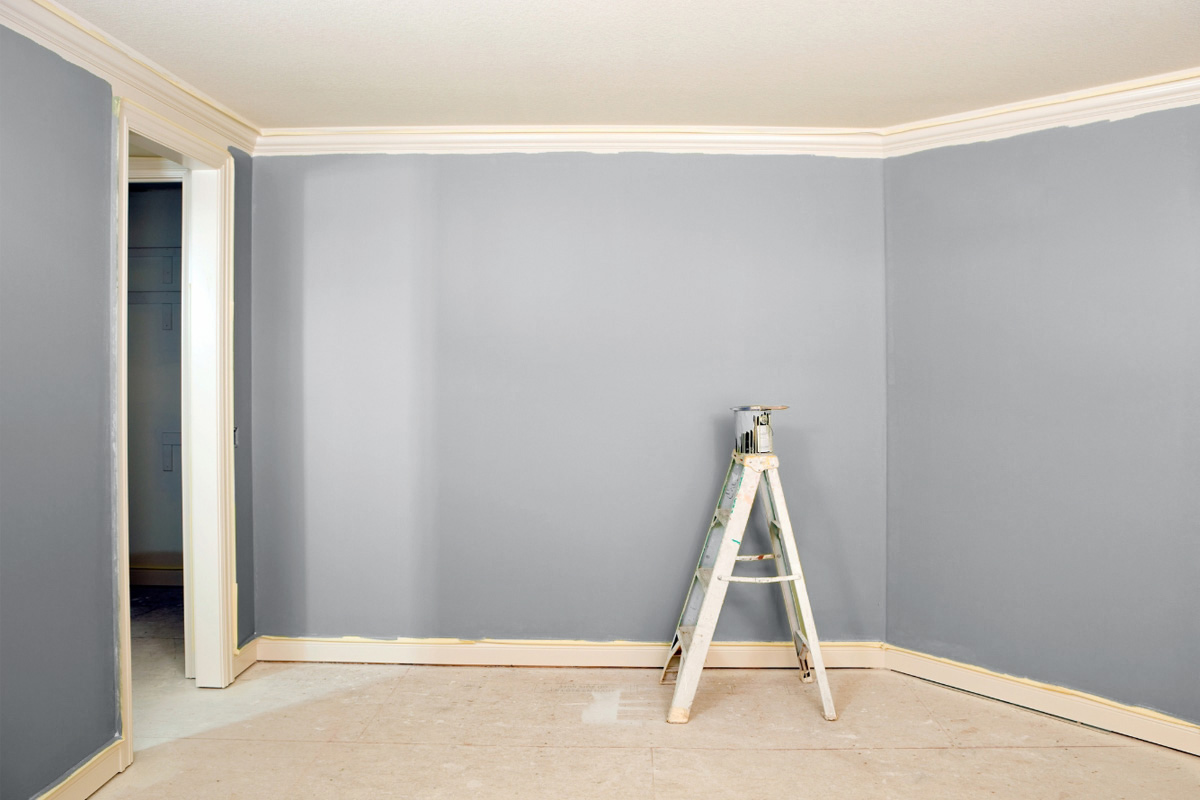Cleveland Metro Painting Specialists: Your Experts for Professional Painting Services
Cleveland Metro Painting Specialists: Your Experts for Professional Painting Services
Blog Article
Enhance Your Interior Style With Comprehensive Shade Appointment
The integration of color assessment right into indoor layout offers an unique opportunity to refine and elevate the aesthetic and emotional resonance of an area. By engaging with an experienced shade expert, you can browse the intricacies of shade choice, making sure that your options not just enhance architectural functions however likewise resonate with personal style and psychological influence. This strategic partnership can dramatically influence the general environment of your setting, cultivating a feeling of harmony and function. However, understanding the nuances of this process is essential-- what key aspects should be taken into consideration to attain optimum results?
Advantages of Color Appointment

Furthermore, shade examination help in making the most of natural light and enhancing spatial understanding. Lighter tones can make an area show up even more large, while darker tones develop an intimate setup. Cleveland Metro Painting Specialists. This critical application of shade can significantly affect the total setting of any indoor room
In addition, specialist experts have a detailed understanding of timeless classics and existing fads, making certain that the picked colors will remain enticing with time. This insight can save clients from costly redesigns in the future. Ultimately, shade examination equips clients by giving them with a clear vision and instructions, promoting confidence in their layout selections and eventually resulting in a more enjoyable and effective interior layout result.
Recognizing Color Psychology
The significance of shade psychology in interior decoration can not be overstated, as it explores the psychological and psychological impacts that various colors can stimulate in individuals. Shades can influence state of mind, behavior, and also performance, making them an important consideration in any kind of design job.
For circumstances, warm shades such as red, orange, and yellow are frequently linked with energy and warmth. They can boost feelings of excitement and comfort, making them suitable for social rooms like living kitchens or spaces. Conversely, cool colors like blue, eco-friendly, and purple tend to evoke peace and peace, making them perfect for rooms or reflection areas.
Furthermore, using neutral tones can develop a balanced environment by enabling the bolder shades to attract attention without overwhelming the senses. Comprehending these mental influences enables designers to produce areas that not just look cosmetically pleasing yet additionally advertise emotional well-being.
Incorporating color psychology into interior design involves a thoughtful choice of shades tailored to the designated function of each area, eventually improving the general experience for its passengers. This understanding is vital for accomplishing a practical and harmonious interior environment.
The Color Wheel Explained
Understanding the partnerships in between colors is necessary for reliable interior decoration, and the color wheel works as a beneficial device in this procedure. The color wheel, developed by Isaac Newton in the 17th century, illustrates the range of shades set up in a circular format. It consists of key shades-- red, blue, and yellow-- that can not be produced by mixing various other shades. Additional colors, developed by integrating primaries, consist of eco-friendly, orange, and purple. Tertiary colors result from blending a main and an additional color, bring about tones such as red-orange and blue.
The shade wheel assists designers realize the connections between shades, consisting of complementary, comparable, and triadic schemes. Corresponding colors, located opposite each various other on the wheel, create vivid contrasts that can stimulate an area. Analogous colors, situated beside each other, supply a harmonious and cohesive appearance. Triadic schemes utilize 3 uniformly spaced shades, providing equilibrium and visual rate of interest.
Making use of the color wheel in interior layout not just enhances aesthetic allure yet also evokes details feelings and atmospheres, making it a crucial recommendation for shade appointment. Understanding these connections eventually encourages developers to create spaces that are both aesthetically exciting and functional.
Choosing the Right Combination
Usually, selecting the right palette is a definitive aspect in attaining an effective interior decoration task. An appropriate shade system can link a room, enhance its features, and evoke desired feelings. To start, take into consideration the objective of the area. Various rooms offer different features and need combinations that reflect their intended use; for example, tranquil colors such as soft blues or greens function well in rooms, advertising leisure.
Light can significantly alter just how shades show up, so it is vital to evaluate the area at different times of the day. An unified combination needs to match these features, producing a natural look throughout the room.
When choosing shades, utilize the 60-30-10 regulation, which suggests that 60% of the area should be a leading shade, 30% an additional shade, and 10% an accent color. This ratio makes certain balance and aesthetic interest (Cleveland Metro Painting Specialists). Lastly, example colors on the wall surfaces prior to committing, as this enables you to see just how the shades connect with each other and the total ambiance they produce in your indoor layout project.
Dealing With a Shade Consultant

When working with a color specialist, the process generally begins with an initial consultation. Throughout this conference, you'll review your vision, preferences, and the existing elements in your space. The consultant will certainly examine your requirements and may recommend specific shade combinations that straighten with your objectives.
After developing an instructions, the professional will offer examples and visual help to help you visualize the suggested color design. This step is Color Consultation in Lakewood important, as shades can appear differently under differing illumination conditions.
Additionally, a shade specialist can guide you in picking complementary furnishings, art work, and accessories to integrate with your selected palette. By teaming up closely, you can attain a refined visual that raises your insides and produces an inviting environment. Ultimately, the expertise of a shade consultant can dramatically enhance the total impact of your layout project.
Verdict
In summary, thorough color examination acts as a crucial device for improving indoor design. By leveraging professional knowledge of shade psychology and spatial dynamics, a tailored shade palette can be established to stimulate specific emotions and develop a harmonious atmosphere. This critical approach not only cultivates a cohesive design story yet also reduces the threat of costly redesigns. Ultimately, engaging with a shade professional guarantees a notified and cosmetically pleasing end result, elevating the general experience of the area.
By engaging with a seasoned color consultant, you can navigate the complexities of color selection, ensuring that your choices not only complement building attributes yet additionally reverberate with individual design and mental effect. It makes up main colors-- red, blue, and yellow-- that can not be created by mixing various other shades.The shade wheel assists designers understand the relationships between shades, consisting of corresponding, comparable, and triadic schemes.When selecting colors, make use of the 60-30-10 regulation, which recommends that 60% of the area ought to be a dominant shade, 30% a second color, and 10% an accent color. By leveraging expert understanding of shade psychology and spatial dynamics, a tailored color palette can be created to stimulate certain emotions and develop an unified atmosphere.
Report this page